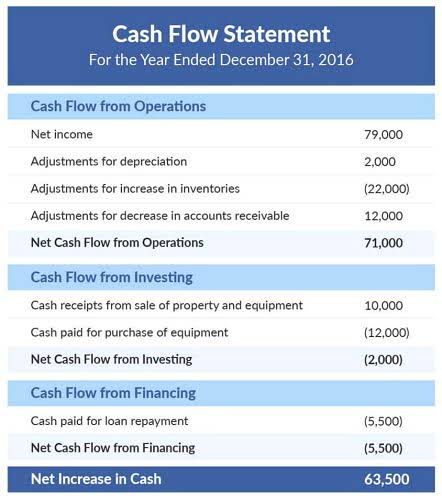
Including these components helps prove to anyone who looks at the invoice that it has been properly prepared, has the necessary professionalism, and is consistent with the requirements of the law. This also minimizes the chances of the payment for goods or services being delayed or disputed. Any financial invoicing has emerged to be a complex within itself today, thanks to plugins that are present in various technologies. Businesses have shifted from the traditional way of handling invoicing and billing thanks to the fear of mobility and flexibility to the normal way due to cloud-based platforms.
What is the difference between an invoice and a bill?

Bills serve as requests for immediate payment, making them common for one-time retail purchases or services. It simplifies the billing process, ensuring that the customer is expected to pay at the time of purchase. Bills help businesses record completed transactions and confirm normal balance payments.

Products & pricing
- Save taxes with Clear by investing in tax saving mutual funds (ELSS) online.
- Just upload your form 16, claim your deductions and get your acknowledgment number online.
- Below, we’ll explain how bills and invoices differ, how they work together, and how Stripe can help businesses manage both.
- An invoice should be sent to your customer once you have delivered the goods or services.
- As an official document, it must adhere to compliance standards and include specific information such as invoice number, date of issue, and detailed descriptions of the goods or services sold.
- While bills require immediate payment, invoices offer extended payment terms with greater formality.
Invoices are ideal for businesses that provide a product or bills vs invoice service but then arrange for their customers to pay them on a future date. These incoming bills are handled as part of your broader accounts payable process. Accounts payable refers to the money you owe to others for goods and services. At its simplest, an invoice is a commercial document issued to a customer following the exchange of goods and services. Invoicing is the process of sending a request for payment before payment is made, while billing is the process of sending a request for payment after payment is made.

One-time purchases or custom orders
The global e-invoicing industry is expected to grow by over 20% annually and reach $24.7 https://www.bookstime.com/articles/prepaid-expenses billion by 2027, highlighting the importance of invoicing to the global economy. Optimised invoice components, host of configurations, multiple billing modes, and so on.. Experience the all-new TallyPrime 6.0 – connected banking, enhanced bank reconciliation, automated accounting, and integrated payments for effortless business management.
- An invoice is generated by the business providing a service and the customer receiving the invoice records it as a bill to be paid.
- They are closely related as they are synonymous with each other but sometimes they cannot be exchanged and only one term will fit in the context.
- Understanding the differences between bills and invoices is important, especially for freelancers and small business owners who need to manage their finances effectively.
- The payment is either a one-off, following the purchase, or a regular recurring payment.
- So, if you are a vendor, you would send an invoice after a service has been completed and money is owed, and then you would send a receipt after you receive the payment from the invoice.
Invoices
A quote, or a sales quote, is a document that provides an estimate of the total price you have to pay if you decide to buy from that vendor. In short, it is not the same as an invoice or a bill, as a quote cannot be used to request payment. Even though some types of invoices can be used to request payments at agreed intervals, they can not replace recurring bills in a billing cycle.
For businesses, knowing when to issue an invoice versus a bill can impact cash flow, customer relationships, and financial efficiency. In this guide, we break down the key differences, best practices, and how automating the process can streamline your financial operations. While similar to an invoice, a bill is often a more straightforward request for payment. It typically includes a summary of the transaction and the total amount due without the detailed breakdown of items.
Payment expectations
- Professionalism in communication is key, and using the correct term can influence client perception and payment expectations.
- Appliance stores or B2B businesses must provide receipts to their customers when they pay for products.
- This commercial document is a printed statement describing the total amount owed in exchange for goods or services.
- In conclusion, invoices, bills, and receipts each play a unique role in the realm of financial transactions.
- Bills are primarily used to track expenses, manage accounts payable, and request payments from customers or clients.
- A bill, on the other hand, is a more immediate request for payment, usually presented when payment is due immediately or shortly after receiving goods or services.
This is evidence of a sale, showing that you rendered certain work or delivered certain goods or services for the stated price. Invoices do contain valuable information concerning the revenue and expenditure activities of a business for taxation purposes. However, it’s important to note that the common concept of a bill typically implies prompt payment upon receipt, especially in retail or one-time service contexts.
- Understanding their different roles is not just important—it’s essential.
- These details help streamline accounting, taxes, and financial management.
- However, depending on the terms of the agreement between both parties, an invoice can be issued after a certain project milestone or time period (e.g., once every two weeks for a long-term project).
- An example of a bill is when a monthly utility bill is sent to a customer after they have used the services.
- The importance of a receipt is that it serves as documentation that the products and/or services has been paid for and the business transaction is complete.
- On the other hand, if you are a customer, the invoice you receive is your bill, and then you will receive a receipt once you pay your bill.
- Unlike invoices, bills do not include extended payment terms, making them ideal for quick, straightforward purchases.
Invoices help businesses manage cash flow and comply with tax regulations. Understanding the role of billing software is pivotal in maintaining transparent financial transactions. Differentiating between invoices, bills, and receipts is pivotal in maintaining transparent financial transactions. While these documents may appear similar at first glance, they each serve distinct functions, from initiating a transaction and requesting payment to providing proof of payment received. Orderry invoicing software helps entrepreneurs streamline invoice and billing processes by keeping accurate customer data, sending invoices and bills on time, and setting payment collection reminders.
What is the difference between a waybill and an invoice?
This helps both parties keep track of the transaction and makes tax filing easier. Use of invoices and bill are expected to vary as far as payment is concerned. Invoices usually have certain regulations regarding settlement, and it could be case by case basis between seller and buyer. Unlike the payment request purpose of the invoice bill, it works as an effective communication tool with your customers, informing them what to expect regarding payment schedules.